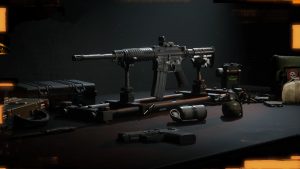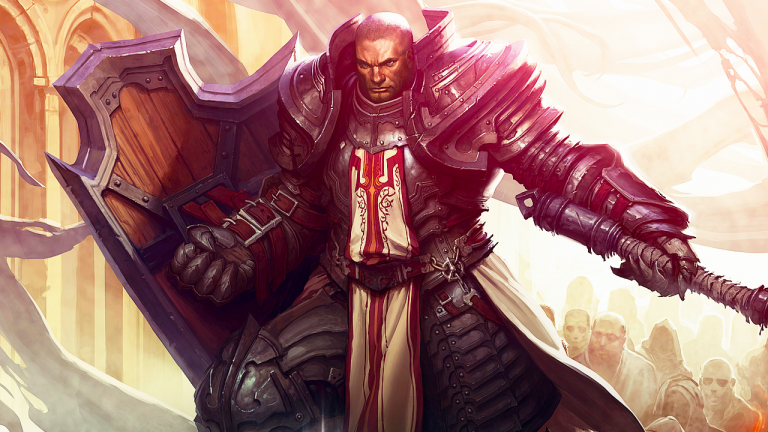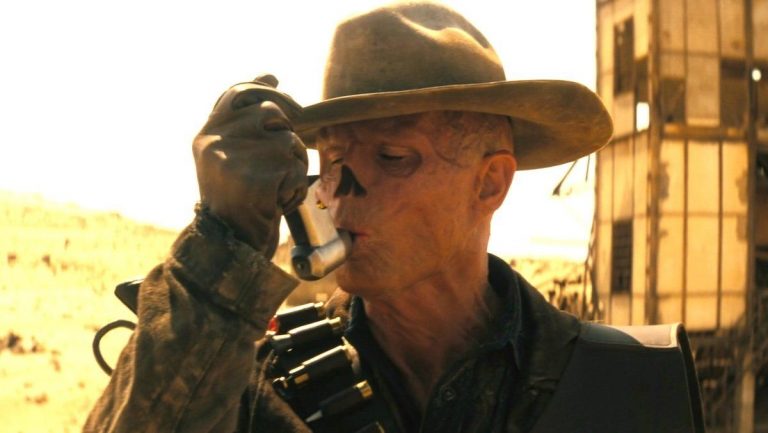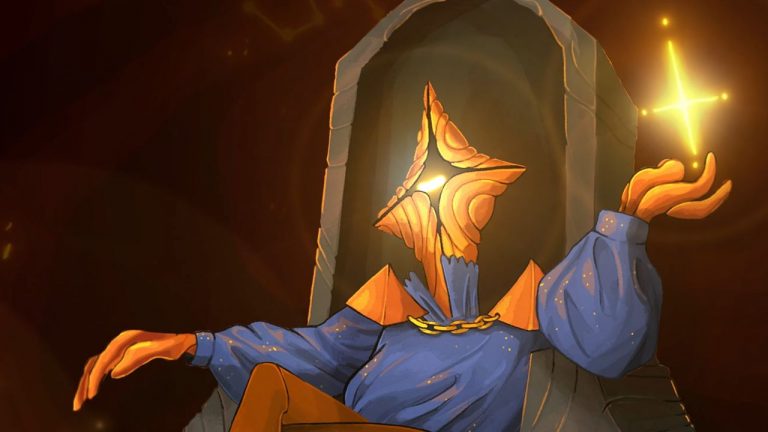In the ever-evolving world of Dungeons & Dragons, few changes have sparked as much controversy as the recent modifications to the College of Dance Bard subclass. This unique DND bard variant, introduced in the 2024 edition, initially pirouetted its way into players’ hearts with its graceful blend of combat prowess and performative flair. However, recent updates have left many fans feeling like they’ve stumbled mid-routine, facing unexpected nerfs that have altered the subclass’s rhythm and flow.
The College of Dance Bard emerged as a breath of fresh air in the D&D landscape, offering players a chance to embody the elegance and deadliness of a combat dancer. With its focus on unarmored defense, agile strikes, and emphasis on mobility, it promised a playstyle that was as visually spectacular as it was effective on the battlefield. The subclass quickly gained a following among players who relished the idea of a bard who could literally dance circles around their enemies.
However, as with any new addition to the game, balance concerns inevitably arose. The developers, in their ongoing quest to fine-tune the player experience, have implemented a series of changes that have significantly altered the trajectory of this beloved subclass. These modifications have ignited passionate discussions within the D&D community, with players debating whether the nerfs have brought the Dancing Bard into line or if they’ve cut too deep, potentially undermining the very essence of what made the subclass special.
In this article, we’ll delve into the details of these changes, exploring their impact on gameplay, analyzing community reactions, and offering insights on how players can adapt to this new reality. Whether you’re a devoted fan of the College of Dance Bard or simply curious about the latest developments in D&D character design, join us as we unravel the complexities of this contentious update and what it means for the future of one of the game’s most innovative subclasses.
What is the College of Dance Bard?
The College of Dance Bard subclass represents a fascinating evolution in the world of Dungeons & Dragons character design. At its core, this subclass reimagines the traditional bard archetype, infusing it with a kinetic energy that transforms the character into a whirling dervish of combat and performance. Unlike their instrument-wielding counterparts, Dance Bards harness the power of movement itself, turning their bodies into both weapon and art form.
Central to the College of Dance Bard’s identity is its unique approach to defense and offense. These bards eschew traditional armor in favor of an unarmored defense ability that reflects their agility and grace. As they level up, they gain the ability to dodge and weave through combat with increasing effectiveness, making them surprisingly resilient despite their lack of heavy protection. This emphasis on mobility isn’t just defensive; it’s a core part of their offensive strategy as well.
The subclass’s combat style revolves around the concept of agile strikes. Dance Bards learn to incorporate fluid, dance-like movements into their attacks, allowing them to strike with both precision and flair. This is reflected in their ability to use Dexterity for attack and damage rolls with simple weapons and unarmed strikes, making them formidable in close-quarters combat. The image of a Dance Bard effortlessly gliding through a battlefield, striking foes with graceful yet deadly accuracy, captured the imagination of many players.
Beyond their individual combat abilities, Dance Bards also excel at inspiring and supporting their allies through movement. Their performances aren’t limited to songs or speeches; instead, they motivate their companions through elaborate dances that can boost speed, agility, and even defensive capabilities. This unique form of inspiration adds a dynamic visual element to the bard’s supporting role, allowing players to describe intricate routines that energize their party in the heat of battle.
The College of Dance Bard also brings a fresh perspective to skill use outside of combat. Their training in dance translates to exceptional acrobatic abilities, making them adept at navigating difficult terrain, performing feats of balance, and even incorporating dance into social interactions. This versatility allows players to creatively apply their character’s dancing skills in a variety of scenarios, from elegant courtly performances to daring escapes across precarious rooftops.
At higher levels, Dance Bards were initially designed to gain abilities that further amplified their unique style. These included powers that could enchant enemies with mesmerizing dances or allow the bard to move with supernatural grace. The combination of these abilities created a character that truly embodied the idea of dance as both an art form and a martial discipline.
The introduction of the College of Dance Bard was met with enthusiasm from players who were looking for a more physically dynamic way to play a bard. It offered a refreshing alternative to the typical spell-slinging bard, appealing to those who wanted to be in the thick of combat while still maintaining the supportive and charismatic essence of the class. However, as we’ll explore in the following sections, recent changes to this subclass have altered its trajectory, sparking debate about its role and effectiveness in the game.
Initial Reception and Playtest Feedback
When the College of Dance Bard first twirled onto the D&D scene, it was met with a wave of excitement and curiosity. Players and Dungeon Masters alike were intrigued by this novel take on the bard class, seeing it as a breath of fresh air in the sometimes staid world of character options. The playtest versions of the subclass quickly gained traction, with many eager to put this agile performer through its paces in various campaign settings.
One of the most praised aspects of the early College of Dance Bard was its seamless blend of flavor and mechanics. Players reported feeling truly immersed in the role of a combat dancer, describing elaborate routines as they wove through battlefields. The subclass’s ability to turn simple movements into powerful abilities resonated with those who had long wished for a more physically expressive character option. Feedback from playtests often highlighted how the Dance Bard filled a unique niche, offering a playstyle that was distinctly different from both traditional bards and martial classes.
The initial strength of the College of Dance Bard lay in its versatility and dynamic playstyle. At low levels, players found the combination of unarmored defense and agile strikes to be both effective and thematically satisfying. The ability to use Dexterity for attack and damage rolls with simple weapons and unarmed strikes made the subclass viable in combat from the outset, addressing a common criticism of bards being too reliant on spellcasting in the early game.
Playtesters were particularly enthusiastic about the Inspiring Movement feature, which allowed Dance Bards to support their allies in unique ways. The ability to grant temporary speed boosts or enhance a companion’s dodging ability through dance was seen as both mechanically useful and rich in roleplaying potential. Many groups reported that having a Dance Bard in the party led to more creative and engaging descriptions of both combat and exploration scenarios.
Another aspect that received positive feedback was the subclass’s potential for multiclassing. Players experimented with combinations like Dance Bard/Monk or Dance Bard/Rogue, finding that the abilities of the College of Dance complemented these agility-focused classes well. This versatility in character building was seen as a strong point, allowing for a wide range of character concepts and playstyles.
However, even in these early stages, some concerns were raised about balance. A few playtesters noted that the Dance Bard’s combination of support abilities, combat effectiveness, and skill versatility might be too strong, potentially overshadowing other party members. These early murmurs of balance concerns would later play a role in the subclass revisions that sparked so much debate.
Despite these minor concerns, the overall reception of the College of Dance Bard during its playtest phase was overwhelmingly positive. Players praised its innovation, thematic coherence, and the new dimensions it brought to both combat and roleplaying. Many eagerly anticipated the subclass’s official release, looking forward to incorporating these graceful combatants into their campaigns and character rosters.
The enthusiasm generated during this playtest period set high expectations for the College of Dance Bard. It’s against this backdrop of initial excitement and positive feedback that the recent changes to the subclass have been so keenly felt and hotly debated within the D&D community.
The Nerfs: What’s Changing?
The recent updates to the College of Dance Bard have sent ripples through the D&D community, with many players expressing surprise and disappointment at the extent of the changes. These modifications, widely perceived as nerfs, have altered some of the core features that made the subclass so appealing during its playtest phase. Let’s break down the most significant changes and their potential impact on gameplay.
Inspiring Movement Delayed
One of the most notable changes is the delay of the Inspiring Movement ability from level 3 to level 6. This ability, which allowed Dance Bards to enhance their allies’ speed and agility through their performances, was a cornerstone of the subclass’s support capabilities. By pushing this feature to a higher level, the designers have significantly altered the early game experience for Dance Bard players.
The impact of this change cannot be overstated. At lower levels, bards often struggle to find their niche in combat situations, relying heavily on their limited spell slots and cantrips. Inspiring Movement provided Dance Bards with a unique and flavorful way to contribute to battles from the outset. Its delay to level 6 means that for the first five levels of play – a significant portion of many campaigns – Dance Bards will lack one of their signature abilities.
This change also affects the subclass’s identity. The early access to Inspiring Movement set Dance Bards apart from other bard colleges, emphasizing their role as agile supporters who could enhance their team’s mobility from the get-go. Without this feature, low-level Dance Bards may struggle to differentiate themselves mechanically from other bard subclasses, potentially leading to a less satisfying player experience in the crucial early stages of character development.
Irresistible Dance Removal
Perhaps the most controversial change is the removal of the Irresistible Dance ability at level 14, replaced by a new feature called Leading Evasion. Irresistible Dance was a capstone ability that allowed Dance Bards to compel an enemy to dance, effectively taking them out of combat. It was a powerful control ability that fit perfectly with the subclass’s theme and provided a significant tactical option in high-level play.
Leading Evasion, the replacement ability, allows the Dance Bard to extend their evasion capabilities to nearby allies. While useful, many players feel this ability lacks the flair and impact of Irresistible Dance. The change represents a shift from an offensive, control-oriented ability to a more defensive one, altering the strategic options available to high-level Dance Bards.
This modification has been particularly disappointing for players who were looking forward to unleashing spectacular, battle-turning dances at higher levels. The removal of Irresistible Dance takes away a unique and thematically appropriate crowd control option that set the College of Dance apart from other bard subclasses and even other classes entirely.
Adjustments to Other Abilities
In addition to these major changes, several other tweaks have been made to the College of Dance Bard’s abilities. These include adjustments to how Bardic Inspiration interacts with unarmed strikes and modifications to some of the movement-based benefits the subclass provides. While individually these changes might seem minor, collectively they contribute to a significant shift in how the subclass plays.
For instance, limitations on using Bardic Inspiration with unarmed strikes may reduce the subclass’s effectiveness in certain combat situations, potentially pushing players towards using weapons more often and moving away from the pure “dance as combat” style that many found appealing. Similarly, reduced benefits from movement-enhancing abilities might make the Dance Bard feel less agile and dynamic on the battlefield.
These nerfs, taken together, represent a substantial redesign of the College of Dance Bard. While some argue that these changes are necessary for balance, many players feel that they strip away the unique flavor and mechanical advantages that made the subclass so exciting in its initial conception. The challenge now lies in adapting to these changes while still capturing the essence of what made the Dance Bard a compelling character option in the first place.
Community Reactions and Analysis
The changes to the College of Dance Bard have ignited a firestorm of discussion within the D&D community. Players, Dungeon Masters, and content creators have all weighed in on these modifications, creating a diverse tapestry of opinions and analyses. Let’s dive into the community’s reactions and examine the various perspectives on these controversial changes.
On popular D&D forums and social media platforms, the initial response was one of shock and disappointment. Many players who had been excited about the subclass during its playtest phase expressed frustration at what they perceived as unnecessary nerfs. Comments like “They’ve taken the dance out of the Dance Bard” and “Why even bother with this subclass now?” were common in the immediate aftermath of the announcement.
However, as the dust settled, more nuanced discussions began to emerge. Some players argued that while the changes were significant, they didn’t entirely negate the subclass’s appeal. These individuals pointed out that the core concept of an agile, movement-based bard was still intact, even if some of the more powerful abilities had been toned down or removed.
D&D content creators on platforms like YouTube and Twitch have been particularly vocal about the changes. Many have produced in-depth analysis videos, breaking down each modification and discussing its implications for gameplay. The consensus among these creators seems to be that while the nerfs have indeed reduced the subclass’s power level, they may have been necessary for long-term balance.
One popular streamer noted, “The Dance Bard was probably too strong in its playtest form. These changes bring it more in line with other bard colleges without completely destroying its identity.” This sentiment was echoed by several others who felt that the original version of the subclass might have overshadowed other character options, particularly at higher levels.
However, not all content creators were as understanding. Some argued that the nerfs went too far, stripping away the unique elements that made the College of Dance Bard special. “They’ve turned a graceful dancer into a clumsy stumbler,” remarked one well-known D&D YouTuber, expressing concern that the subclass might now be underpowered compared to other options.
The removal of Irresistible Dance at level 14 has been a particular point of contention. Many players felt that this ability was integral to the subclass’s identity and its removal represented a fundamental misunderstanding of what made the College of Dance Bard appealing. Threads dedicated to brainstorming homebrew alternatives to Leading Evasion have sprung up, indicating that many players are not satisfied with the official replacement.
On the other hand, some members of the community have taken a more optimistic view. These players see the changes as an opportunity to explore new strategies and character concepts within the framework of the College of Dance Bard. “It’s different, sure, but that doesn’t mean it can’t be fun,” wrote one forum user, encouraging others to approach the revised subclass with an open mind.
The debate has also sparked broader discussions about game balance and design philosophy in D&D. Some argue that the nerfs to the College of Dance Bard reflect a trend towards homogenization in character options, with unique and flavorful abilities being sacrificed in the name of balance. Others counter that maintaining balance is crucial for the health of the game and that even with the changes, the Dance Bard remains a distinct and viable option.
Interestingly, the controversy has led to increased interest in the subclass among some players who hadn’t previously considered it. The intense discussions and analysis have put the College of Dance Bard in the spotlight, prompting curious players to give it a try and form their own opinions.
As the community continues to grapple with these changes, it’s clear that the College of Dance Bard has struck a chord with players. Whether viewed as necessary balancing or as an unfortunate neutering of a unique concept, these modifications have certainly gotten people talking, theorycrafting, and in many cases, dancing to a different tune in their D&D games.
How to Adapt: Playing a Dance Bard After the Nerf
While the recent changes to the College of Dance Bard have undoubtedly altered its playstyle, creative players can still find ways to make this subclass shine. Adapting to the nerfs requires a shift in strategy and a willingness to explore new approaches to both combat and roleplay. Here are some tips and ideas for those who want to keep their Dance Bards twirling even after the changes.
First and foremost, it’s crucial to recalibrate your expectations for the early levels. With Inspiring Movement delayed until level 6, low-level Dance Bards will need to rely more heavily on their base class features and spells. This isn’t necessarily a bad thing; it provides an opportunity to develop a well-rounded character before your signature abilities kick in.
Consider focusing on control and support spells in the early game. Spells like “Faerie Fire” or “Tasha’s Hideous Laughter” can be flavored as dance-based abilities, allowing you to maintain the theme of your character while providing valuable support to your party. You might describe your bard using rhythmic movements to highlight enemy weaknesses or performing a comically exaggerated dance that forces foes to laugh uncontrollably.
Don’t neglect your martial capabilities, either. While some of the synergies between Bardic Inspiration and unarmed strikes have been reduced, you can still be an effective combatant. Look for opportunities to use your high Dexterity in creative ways during fights. Perhaps you could focus on a finesse weapon like a rapier, describing your attacks as part of an elegant combat dance.
When you do reach level 6 and gain access to Inspiring Movement, make the most of it. Coordinate with your party members to maximize the benefits of your enhanced mobility. A rogue or monk ally could become particularly deadly with the extra movement speed you provide, allowing them to dart in and out of combat with ease.
The loss of Irresistible Dance at higher levels means you’ll need to rethink your strategy for crowd control. Leading Evasion, while less flashy, can be incredibly useful when used creatively. Consider positioning yourself near allies who are likely to be targeted by area-of-effect spells, effectively increasing your party’s overall survivability. You might flavor this as leading your allies in a synchronized evasive dance.
Multiclassing remains a viable option for Dance Bards looking to enhance their capabilities. A few levels in Monk can provide additional unarmed combat options and movement abilities that synergize well with the Dance Bard’s style. Alternatively, dipping into Rogue can give you expertise in Acrobatics and other useful skills, further emphasizing your character’s agility and grace.
Don’t forget about the roleplaying aspects of your character. The nerfs may have affected some mechanical elements, but they haven’t changed the core concept of a bard who expresses themselves through dance. Look for opportunities to incorporate dance into social interactions, exploration, and problem-solving. Perhaps you could use your dancing skills to distract guards, navigate precarious terrain, or even communicate secretly with allies.
Lastly, consider working with your Dungeon Master to create custom magic items or feats that complement your dancing style. While these would be homebrew elements, many DMs are open to such additions if they help realize a character concept without breaking game balance.
Remember, the essence of the College of Dance Bard lies not just in its mechanical abilities, but in the creativity and flair you bring to the character. By thinking outside the box and fully embracing the performative aspects of the subclass, you can still create a memorable and effective character that dances to the beat of their own drum.
Bard Nerfs in One DND 6e
The nerfs to the College of Dance Bard have undoubtedly changed the landscape for players who were drawn to this unique subclass. The delay of Inspiring Movement, the removal of Irresistible Dance, and the various other adjustments have reshaped how the Dance Bard functions in both combat and roleplay situations. While these changes have been met with mixed reactions from the D&D community, they don’t spell the end for this flamboyant and agile character option.
It’s clear that the designers’ intent was to bring the College of Dance Bard more in line with other subclasses, addressing concerns about balance that arose during the playtest phase. While this has resulted in a reduction of some of the subclass’s more powerful and distinctive features, it has also opened up new avenues for creative play and strategic thinking.
For players who are willing to adapt, the College of Dance Bard still offers a unique and engaging playstyle. The core concept of a bard who uses movement and dance as their primary form of expression remains intact, even if some of the mechanical manifestations of this idea have changed. With some creative thinking and a willingness to explore new strategies, Dance Bards can still pirouette their way to victory on the battlefield and in social encounters.
Moreover, the passionate discussions surrounding these changes highlight the D&D community’s investment in diverse and flavorful character options. The desire for mechanically interesting and thematically cohesive subclasses is clear, and it’s likely that future updates and homebrew creations will continue to explore the concept of the combat dancer in new and exciting ways.
Ultimately, while the nerfs to the College of Dance Bard may have changed its tempo, they haven’t silenced its song. For those who are drawn to the idea of a character who fights with grace and inspires through movement, the Dance Bard remains a compelling choice. It may require a bit more creativity and adaptability to shine now, but in the hands of an imaginative player, the Dance Bard can still be the star of the show.
So, to all the aspiring Dance Bards out there: don’t hang up your dancing shoes just yet. Embrace the challenge, find new rhythms, and show the world that even after a stumble, a true performer knows how to recover with style. The stage is set, the music is playing, and your next great performance awaits. It’s time to dance!
The post From Pirouettes to Pratfalls: The Shocking Nerf of D&D’s Dancing Bard appeared first on LitRPG Reads.












